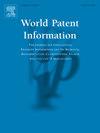Patenting trends in biodegradable implant: An analysis
IF 1.9
Q2 INFORMATION SCIENCE & LIBRARY SCIENCE
引用次数: 0
Abstract
Biodegradable metal implants are a significant innovation in medical science, offering temporary mechanical support and gradually dissolving within the body, thus avoiding the need for a second surgery. This study presents a comprehensive patent landscape analysis of metallic biodegradable implants: examining key trends, technological advancements, and major patent holders. Analysing 2114 global patent filings, the study identifies leading advancements in composition, manufacturing techniques, surface modifications, and clinical applications. There is clear information about the legal status of approximately 65 % of the total patent records, including granted patents that are still in force and those that have lapsed or discontinued due to non-renewal or other reasons. Specifically for India, a total of 177 individual patent application records involving filings in Indian jurisdiction resulted from a targeted screening procedure, with 99.4 % remaining active and 0.6 % marked as expired. However, biodegradable implant patent filings in India remain below expectations. This is attributed to the stringent application of Sections 3(i), 3(d), 3(f), and 3(e) of The Patent Act, 1970, that aim to minimize social costs in medical technology. These findings offer valuable insights for researchers, policymakers, and industry stakeholders navigating India's evolving patent landscape and future commercialization of metallic biodegradable implants.

生物可降解植入物专利趋势分析
可生物降解的金属植入物是医学上的一项重大创新,它提供暂时的机械支持,并逐渐在体内溶解,从而避免了第二次手术的需要。本研究呈现了金属生物可降解植入物的全面专利景观分析:检查关键趋势、技术进步和主要专利持有人。该研究分析了全球2114项专利申请,确定了在成分、制造技术、表面修饰和临床应用方面的领先进步。大约65%的专利记录的法律状态有明确的信息,包括仍然有效的授权专利和由于不续展或其他原因而失效或终止的专利。特别是在印度,通过有针对性的筛选程序,共有177个单独的专利申请记录涉及印度管辖范围内的申请,其中99.4%仍然有效,0.6%标记为过期。然而,印度可生物降解植入物的专利申请仍低于预期。这是由于严格执行1970年《专利法》第3(i)、第3(d)、第3(f)和第3(e)条,目的是尽量减少医疗技术的社会成本。这些发现为研究人员、政策制定者和行业利益相关者在印度不断发展的专利格局和金属生物可降解植入物的未来商业化方面提供了有价值的见解。
本文章由计算机程序翻译,如有差异,请以英文原文为准。
求助全文
约1分钟内获得全文
求助全文
来源期刊

World Patent Information
INFORMATION SCIENCE & LIBRARY SCIENCE-
CiteScore
3.50
自引率
18.50%
发文量
40
期刊介绍:
The aim of World Patent Information is to provide a worldwide forum for the exchange of information between people working professionally in the field of Industrial Property information and documentation and to promote the widest possible use of the associated literature. Regular features include: papers concerned with all aspects of Industrial Property information and documentation; new regulations pertinent to Industrial Property information and documentation; short reports on relevant meetings and conferences; bibliographies, together with book and literature reviews.
 求助内容:
求助内容: 应助结果提醒方式:
应助结果提醒方式:


